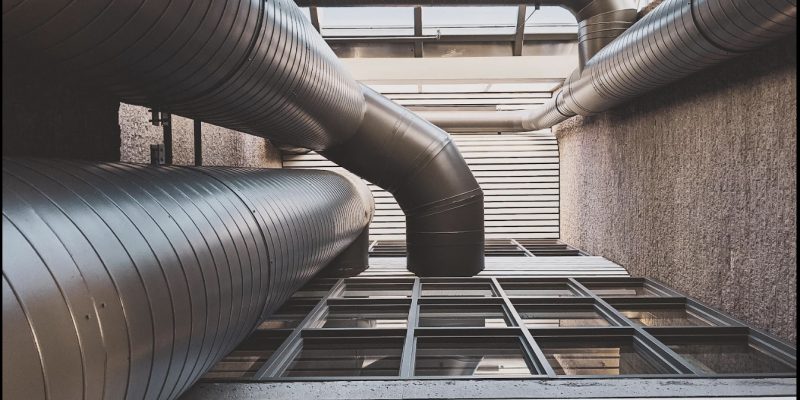If you have a HVAC system, it is critical that you maintain it on a regular basis to avoid unexpected problems. There are a number of things that you will need to do to ensure that your system is running smoothly and not in danger of breaking down.
Regardless of what type of unit you have, the steps that you take will be similar, so you should familiarize yourself with them and be sure to keep them on hand so as not to miss anything. You might want to review your HVAC contract, which details many aspects of your HVAC maintenance. Here is a list of steps that should be added to your HVAC checklist:
Clean your filters
Cleaning your filtration system is perhaps the most essential thing you do for your unit. Regardless of whether your unit is on or off, it will collect large amounts of dust, and this dust adds up quickly. Therefore, it is critical to ensure that filters are cleaned out on a regular basis. You might think that filters should simply be replaced once they get filled up, but this isn’t always true. You can clean them out easily by taking the following steps:
1. Turn off your heater or air conditioner.
Be sure that it is turned off, because you don’t want to accidentally start fiddling with parts while the unit is turned on.
2. Find the unit’s service panel.
This is where thermostat wires connect to your unit. They are located either at your furnace or air handler.
3. Clean with running water.
Be sure to clean the filters thoroughly so that no debris is left on them. Allow them to dry completely before putting them back.
It is advisable to clean your HVAC filters every two weeks. Changes should take place every 90 days.
Wash out your condenser coils
It is also essential that you keep these coils clean. They are located on the outside part of your unit. They are one of the parts of your unit through which heat is removed from the refrigerant. The refrigerant is first heated in the compressor, then it enters the condenser coil and is released outside.
To clean your coil, you should take the following steps:
1. Be sure that your coil is intact and does not need to be replaced.
These parts undergo a lot of harsh activity and can easily start leaking. Therefore, it is important to inspect them thoroughly to make sure they haven’t been damaged. If your inspection indicates serious damage to your coil, you might think about simply replacing it as this would be easier and more cost-effective for you.
2. Do a dry clean.
Before you wash your coil out, you should clean them while dry to remove large amounts of dust or debris that might have collected on it. It is the same principle as sweeping your floor before you mop it.
3. Do a wet clean.
Your coil can actually be cleaned with dishwashing detergent and water. For a really thorough clean, you might add vinegar, as well.
4. Rinse the coil.
Be sure to rinse the coil thoroughly so that all of the cleaner is removed.
Condenser coils should be cleaned every six months.
Clean your evaporator coils
Similarly, you should clean your evaporator coils on a regular basis. The evaporator coil is the part of your unit that absorbs heat from the inside. The process of cleaning the evaporator coil is similar to that of cleaning the condenser coil.
Evaporator coils should be cleaned once a year.
Inspect and clean your burners
Another element of HVAC maintenance is regularly inspecting and cleaning your burner assembly. The burner is the part of a furnace where fuel and air mix together to create heat.
An important thing to keep in mind is that you should maintain your burners in any case, but there are also signs that they might be dirty that you should take note of:
- If your unit is producing a yellow furnace flame, this could be an indicator that the burner is dirty.
- If less heat is coming out than before, it may be clogged.
- Any unusual noises are generally indications of problems.
The steps of inspecting and cleaning your furnace burners are the following:
- (As with other parts) be sure that the unit is turned off.
- Remove the burners from the burner box.
- Clean the burners and the flame sensor. As the name suggests, the flame sensor is an electrical rod that senses when a flame is burning in the furnace. They should be cleaned using compressed air.
Furnace burners should be cleaned every 1-2 years.
Check electrical switches
Your HVAC circuit breaker is located in your main distribution panel in your house. You should inspect it every three years in any case, but in the case that you think you might have a problem you should check it out immediately. Signs of potential problems can include the following:
- Burning smells coming from your unit. Remember, fire risks are real, and carbon monoxide poisoning and other pollutants can be a serious concern.
- Frequent outages
- Hot breakers
- Obvious damage to the breaker
In general, once a given circuit breaker has been in place for ten years, it is likely to start having problems and need to be replaced.
Remember that keeping and maintaining an HVAC maintenance schedule is critical to the safety and continued functioning of your unit.
Clean the flue system
It is also important that you inspect and clean your flue system on a regular basis. The flue is the pipe or opening valve through which exhaust leaves your unit and goes outdoors.
Clean the outside of your unit
In addition to maintaining the individual parts of your unit, your HVAC checklist should include taking care of the outer part, as well. It is through the exterior, of course, that dust and other particulate matter creep into your unit’s component parts, so you’ll want to be sure that every aspect of your system is clean and in good working order.
Cleaning your HVAC’s exterior is the easiest part, of course, so you can take care of it along with your weekly dusting and cleaning routine. While doing so, you can always keep an eye out for any of the potential issues mentioned here.
Make your HVAC maintenance schedule part of your overall routine
Although it may seem burdensome and overly technical, maintenance for HVAC systems is essential to keeping your home and your climatization in good working order, and a having a checklist is a good way to keep it going. Getting in the habit of going through the more frequent parts of the checklist and having at least an HVAC annual maintenance will eventually make your HVAC routine less complicated and more simply a part of your overall household maintenance.




















